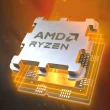In recent years, the term “gaming TV” has emerged in the consumer electronics market, signifying a specific category of televisions optimised for playing video games. Unlike standard TVs, gaming TVs are designed with features that enhance the gaming experience by reducing latency, improving picture quality, and supporting high refresh rates, among other capabilities. Here’s a comprehensive look at what makes a gaming TV distinct and why it has become a crucial component for gamers.
Key Features of a Gaming TV
Low Input Lag: Input lag is the delay between pressing a button on a controller and seeing the action on the screen. In gaming, especially in competitive or fast-paced genres, low input lag is critical. Gaming TVs are engineered to minimise this delay, often achieving input lag times as low as 10 milliseconds. This is achieved through advanced processing techniques and game modes that prioritise speed over image processing.
High Refresh Rates: Refresh rate, measured in hertz (Hz), indicates how many times per second the screen is updated. Gaming TVs often feature high refresh rates of 120Hz or even 240Hz, which allow for smoother motion and a more responsive feel. This is particularly important for fast-action games where fluid movement is essential for both gameplay and immersion.
Variable Refresh Rate (VRR) Support: VRR technology, including standards like HDMI 2.1’s VRR, AMD FreeSync, and NVIDIA G-Sync, ensures that the TV’s refresh rate matches the output of the gaming console or PC. This synchronisation reduces screen tearing, a visual artifact that occurs when the TV displays parts of multiple frames simultaneously, resulting in a smoother gaming experience.
High Dynamic Range (HDR): HDR enhances the contrast and color range of the display, providing more vivid and lifelike images. Gaming TVs with HDR support can display a wider range of colors and greater detail in both dark and bright areas, significantly enhancing the visual experience in games that support HDR content.
Advanced Processing Power: To handle the demands of modern gaming, gaming TVs are equipped with powerful processors that can manage complex image processing tasks quickly and efficiently. These processors help in reducing input lag, managing HDR content, and maintaining high frame rates.
HDMI 2.1: HDMI 2.1 is a crucial standard for gaming TVs as it supports higher resolutions and refresh rates, such as 4K at 120Hz or 8K at 60Hz. It also provides features like Auto Low Latency Mode (ALLM) and Enhanced Audio Return Channel (eARC), which improve both video and audio quality.
Gaming TV vs Standard TV
While many of the features of gaming TVs can be found in high-end standard TVs, the differentiation lies in the optimisation and prioritisation of these features for gaming. Standard TVs might offer good picture quality and some smart features, but they often lack the low input lag, high refresh rates, and VRR support that are crucial for a seamless gaming experience. Gaming TVs are designed with gamers in mind, ensuring that their needs for performance and responsiveness are met .








